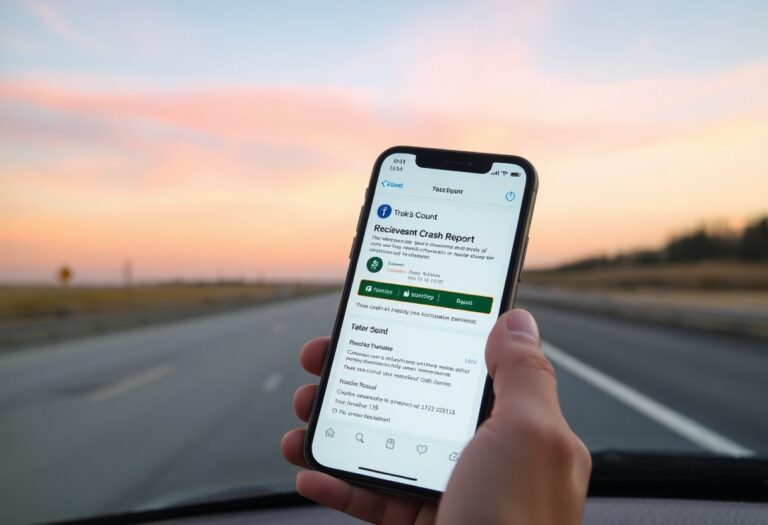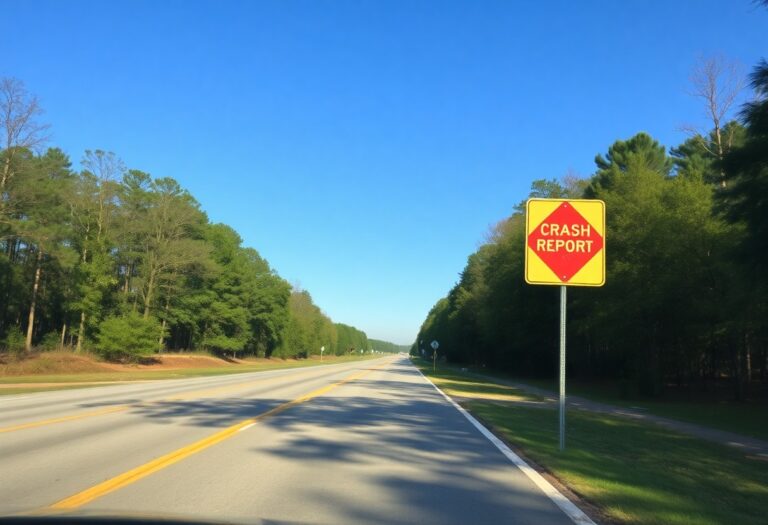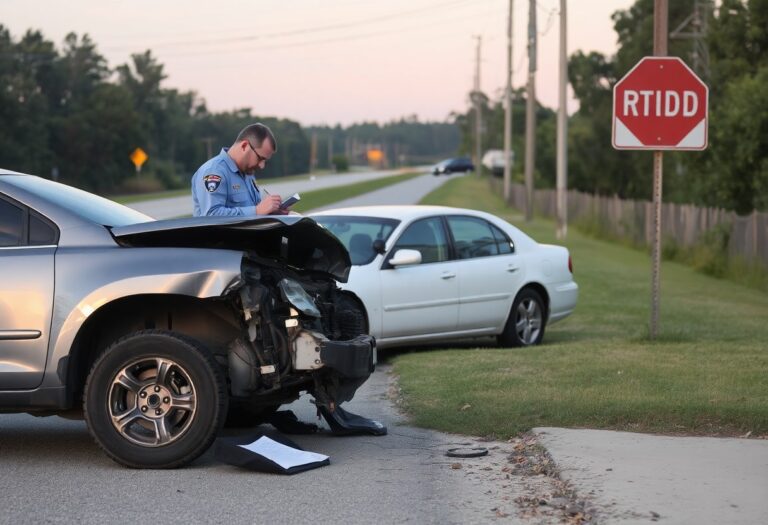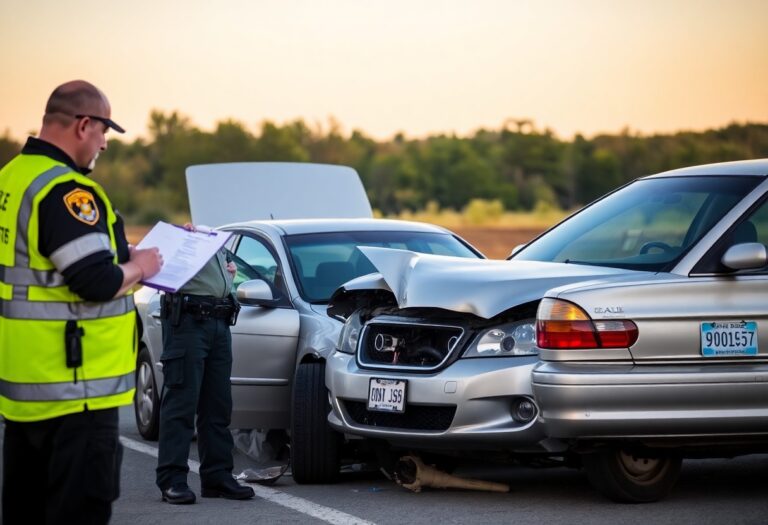Washington County, Indiana, presents various resources designed to support you in navigating the aftermath of a vehicle accident. Understanding how to obtain your crash report can significantly expedite the process of addressing insurance claims or legal matters. With user-friendly services and local law enforcement assistance, you can efficiently access the necessary documentation. Additionally, it’s vital to know your rights and responsibilities after a crash, ensuring that you are well-informed during this challenging time.
Quick Access to Crash Reports in Washington County
Obtaining a crash report in Washington County is streamlined for your convenience. Utilizing both local and state resources, you can access important information about vehicle accidents efficiently. Whether you are involved in a minor fender-bender or a more serious collision, having your crash report is necessary for insurance claims and legal matters.
Navigating the Indiana State Police Portal
The Indiana State Police Portal is a user-friendly platform designed to facilitate the retrieval of crash reports. By visiting the portal, you can enter the necessary details such as the report number, date of the accident, and involved parties to quickly access your report. Ensuring you have all required information at hand makes the process even smoother.
Local Law Enforcement Contacts for Report Retrieval
To acquire your crash report from local authorities in Washington County, you can contact the Washington County Sheriff’s Department or the nearest police station. Each department offers direct assistance and can provide you with requirements specific to their processes, ensuring you get the information you need without delay.
The Washington County Sheriff’s Department is located at 801 E. Walnut Street, Salem, IN. By calling their non-emergency number, you can get guidance on which documents or identification you might need for report retrieval. If the accident occurred in the city limits, the Salem Police Department may also hold the report, and they can assist you with their procedures. Each department aims to streamline your experience and ensure you can access your necessary documents with minimal hassle.
Essential Information Included in Crash Reports
Crash reports compile vital information regarding incidents on Indiana’s roads, providing clarity and context for the parties involved. Each report typically includes details such as the date, time, and location of the crash, along with descriptions of vehicles and drivers involved. Witness statements, weather conditions, and diagrams illustrating the scene further enhance the comprehensive nature of these documents. Ensuring you have access to all relevant data is crucial for understanding the incident and making informed decisions moving forward.
Key Elements of the Report You Should Review
When reviewing a crash report, focus on key elements such as the identification of all parties involved, vehicle descriptions, and any citations issued. You should also examine the diagram of the crash scene and the narrative that details the sequence of events. These components can provide insights into liability and help you determine next steps, such as filing insurance claims or seeking legal advice.
Understanding How to Interpret Crash Data
Interpreting crash data can seem daunting, yet it is achievable with a focused approach. Identifying patterns such as high accident locations or common contributing factors helps you understand the broader implications surrounding traffic incidents. For instance, if a specific intersection has multiple crashes, you might consider advocating for enhancements like improved signage or traffic lights. By analyzing this data, you gain valuable knowledge that can help promote safety and enhance response strategies in similar situations.
Learning to read crash data involves breaking down statistics into manageable insights. A report may highlight factors like excessive speeding or distracted driving as recurring themes in various incidents. You can utilize this knowledge not just for personal assessments, but for discussions with local authorities about safety improvements in your area. Actively engaging with this data empowers you to contribute to safer driving environments and encourages proactive measures that benefit the entire community.
Common Scenarios That Require a Crash Report
Accidents can occur in various circumstances, making crash reports imperative for drivers. Scenarios like multi-vehicle collisions, hit-and-runs, or accidents with injuries often necessitate a detailed report to clarify facts and assist with insurance processes. For instance, if you collide with another vehicle while turning left at a busy intersection, a crash report can provide a clear account of the events, aiding in liability determination and ensuring that you have the evidence needed for your case.
Insurance Claims Processing
Your insurance provider will typically require a crash report to assess claims accurately. The report serves as documentation outlining the specifics of the accident, including time, location, and involved parties. This information is vital in determining culpability and processing claims efficiently, especially in complex cases involving multiple insurers or disputes over damages. Having a thorough crash report can significantly expedite the claims process, allowing you to focus on recovery.
Legal Implications of Accident Investigation
Navigating the aftermath of an accident can involve more than just dealing with insurance. If legal action arises from the incident, a crash report will form the backbone of your defense or prosecution. It offers an official record that may be scrutinized by lawyers and courts to establish fault or validate your account. In cases of severe injury or damage claims, this report becomes indispensable in negotiating settlements or pursuing litigation, protecting your interests in what can otherwise be a chaotic and stressful process.
In the event of an accident that leads to legal scrutiny, the details in the crash report can influence the outcome significantly. For example, if the report shows clear evidence of negligence, such as a police officer stating that one driver failed to yield, this can strengthen your position in court. Conversely, if the report indicates shared responsibility, it may necessitate negotiations involving comparative fault, impacting financial settlements and insurance payouts. Therefore, ensuring accurate and comprehensive details are recorded in the crash report can make a tangible difference in the legal process that follows an accident.
Tips for Smooth Report Acquisition and Follow-up
To ensure a hassle-free experience when acquiring your crash report, follow these important tips. First, collect all relevant information related to the incident, including your incident number, date, time, and location of the accident. Next, initiate your request through the correct channels as designated by the Washington County authorities, whether online or in-person. Regularly check the status of your request and maintain clear communication with officials. This proactive approach reduces delays and enhances your chances of timely access.
Best Practices for Requesting Your Report
Requesting your crash report can be straightforward if you take the right approach. Always start by obtaining the specific contact information for the department handling crash reports in Washington County. Be as detailed as possible when providing your incident information to help officials locate your report quickly. Consider submitting your request via an online portal, where available, to save time and receive instant confirmation of your request.
How to Follow Up if There’s a Delay in Receiving Your Report
If you experience a delay in receiving your crash report, take a systematic approach to follow up. Start by reaching out to the designated department, ideally via the same method you used for your original request. Make sure to have your incident number and any other details readily available. A polite inquiry can serve as a helpful reminder for the staff and may expedite the process.
Following up on a delayed crash report can often require persistence. Keep track of when you initiated the request, and if you haven’t received your report within the expected time frame, make a call or send an email every few days. Documenting your communications and establishing a rapport with the staff can also make them more attentive to your follow-up inquiries. Additionally, consider checking online platforms or forums associated with crash report processing for tips from other drivers who may have experienced similar issues in Washington County.
The Role of Crash Reports in Driver Accountability
Crash reports play a significant role in ensuring driver accountability by detailing the circumstances surrounding an accident. These official documents provide valuable insights into factors such as fault, weather conditions, and roadway hazards. By holding drivers responsible for their actions, reports contribute to a safer driving environment and encourage responsible behavior. Law enforcement and insurance companies use these records to determine liability, paving the way for fair resolutions in the aftermath of accidents.
Enhancing Road Safety Through Data Transparency
Data transparency enabled by crash reports enhances road safety by creating awareness among drivers and policymakers. Accessible accident data allows local authorities to identify high-risk areas and implement safety measures effectively. For instance, patterns in crashes can lead to better signage, traffic signal adjustments, and even road design modifications aimed at reducing future incidents. Fostering informed decision-making significantly minimizes the chances of repeat accidents on troubled roadways.
Using Reports to Inform Future Driving Behavior
Analyzing crash reports can have a profound impact on your future driving habits. They highlight risky practices and conditions that contributed to past accidents. By understanding the factors that lead to crashes—such as speeding, distracted driving, or driving under adverse conditions—you can adjust your behavior on the road. Observing how frequent accidents occur at specific times or locations helps you stay vigilant and proactive, ensuring your safety and the safety of others while driving.
For instance, if data indicates that a particular intersection has a high number of accidents due to poor visibility or signal timing, you can approach it with increased caution. Taking this information to heart allows you to adopt safer driving habits. Furthermore, sharing insights from these reports within your community encourages others to adopt similar practices, ultimately creating a culture of safety on the roads. By learning from past incidents, you contribute to a comprehensive strategy aimed at minimizing future accidents and fostering a responsible driving environment.
To wrap up
Taking this into account, navigating crash reports in Washington County, Indiana can be straightforward with the right resources. You now have access to vital tools and information that assist you in filing and obtaining crash reports effectively. If you ever find yourself in need of help, don’t hesitate to utilize local resources or online platforms that are designed to streamline the process for you. Staying informed can significantly ease the stress associated with accident paperwork, ensuring you can focus on what matters most—your recovery and moving forward.













